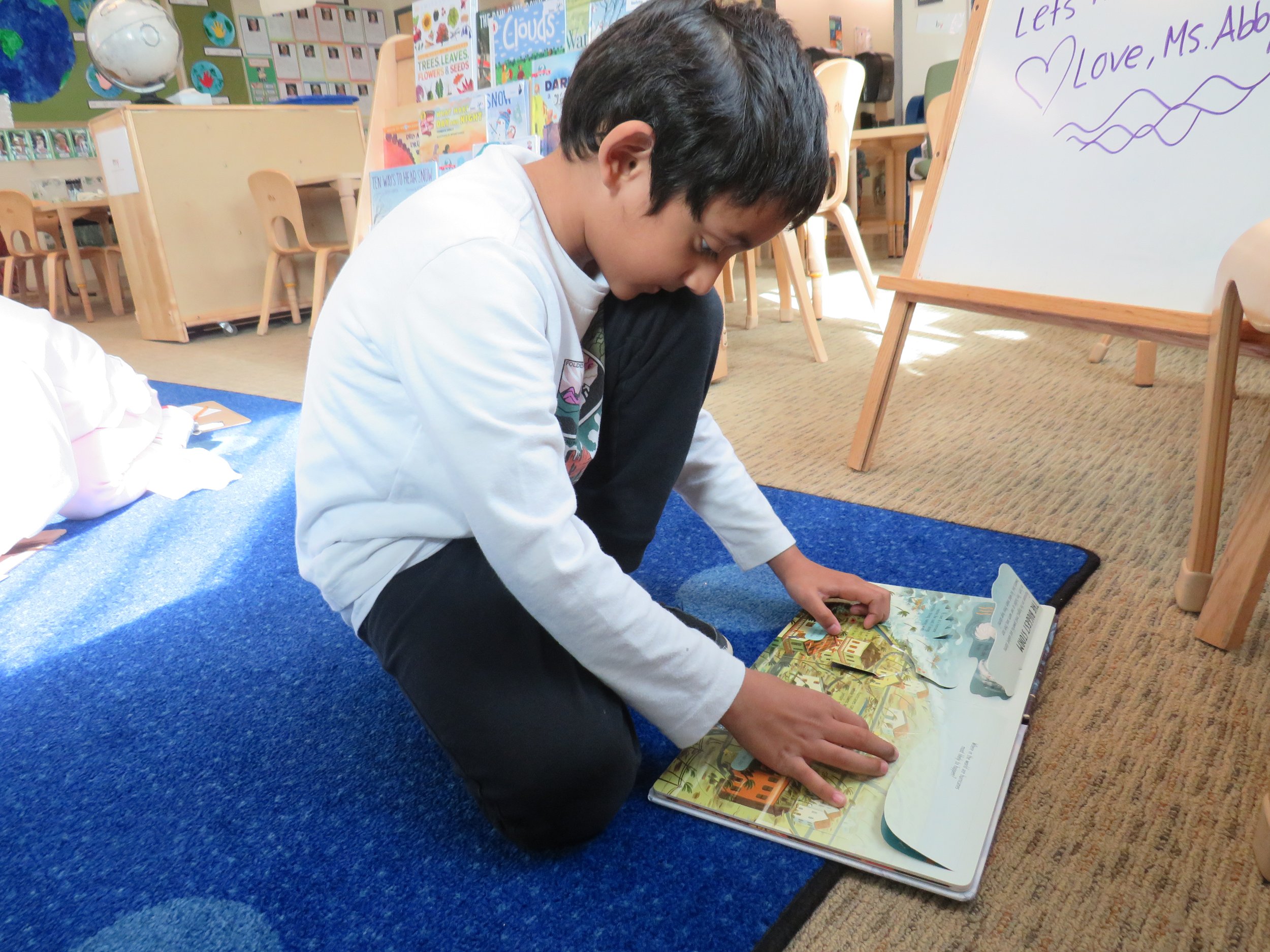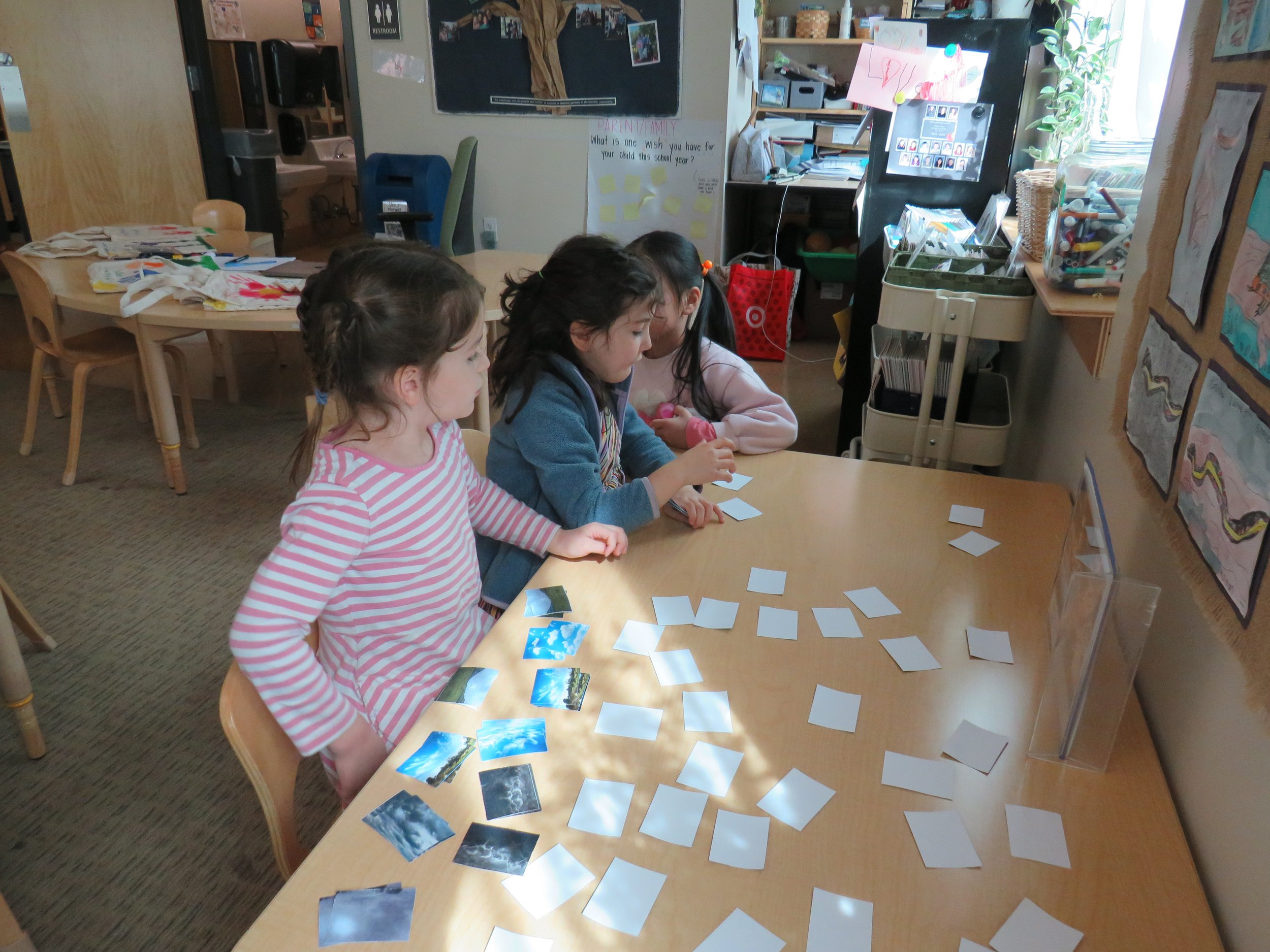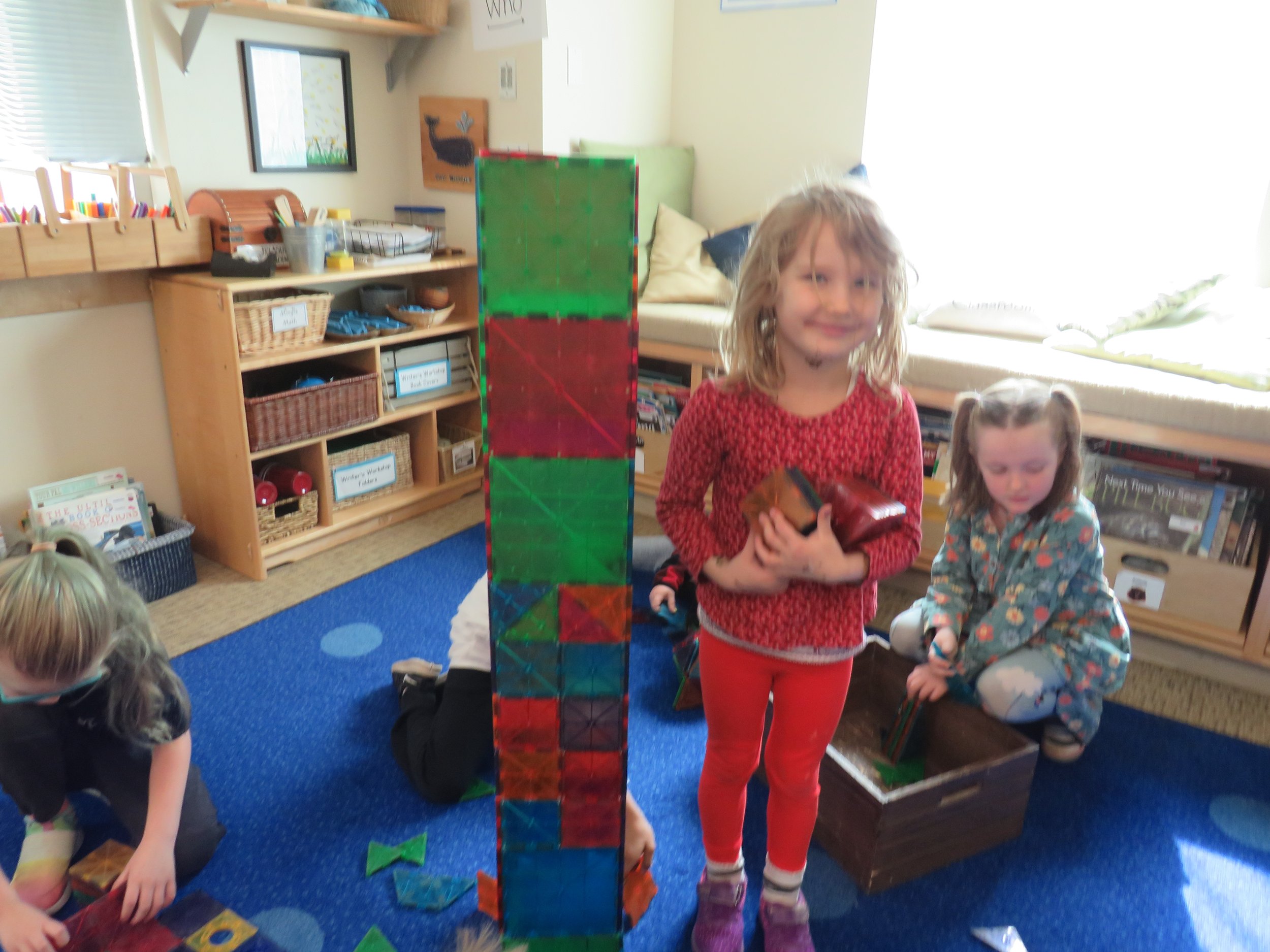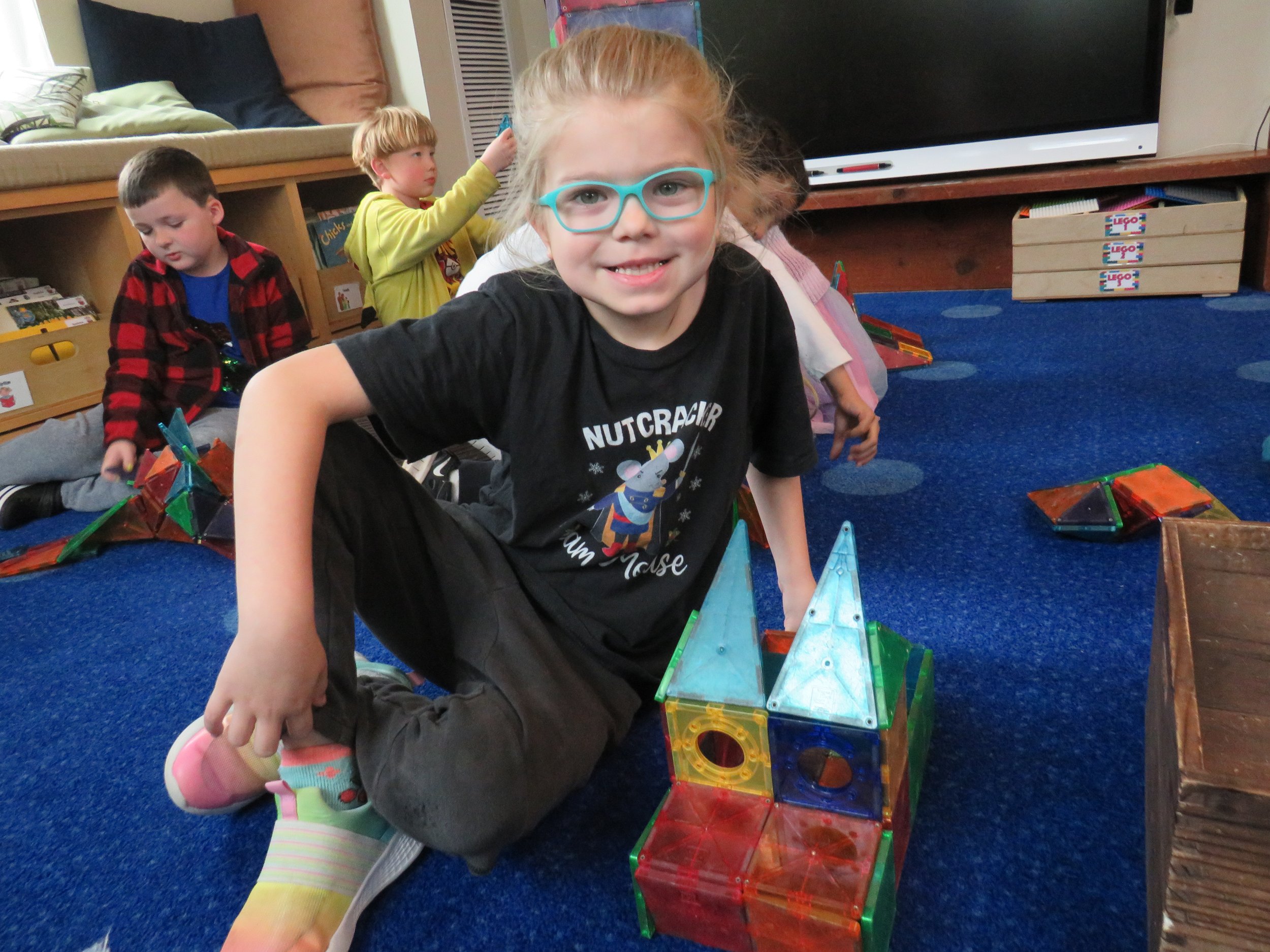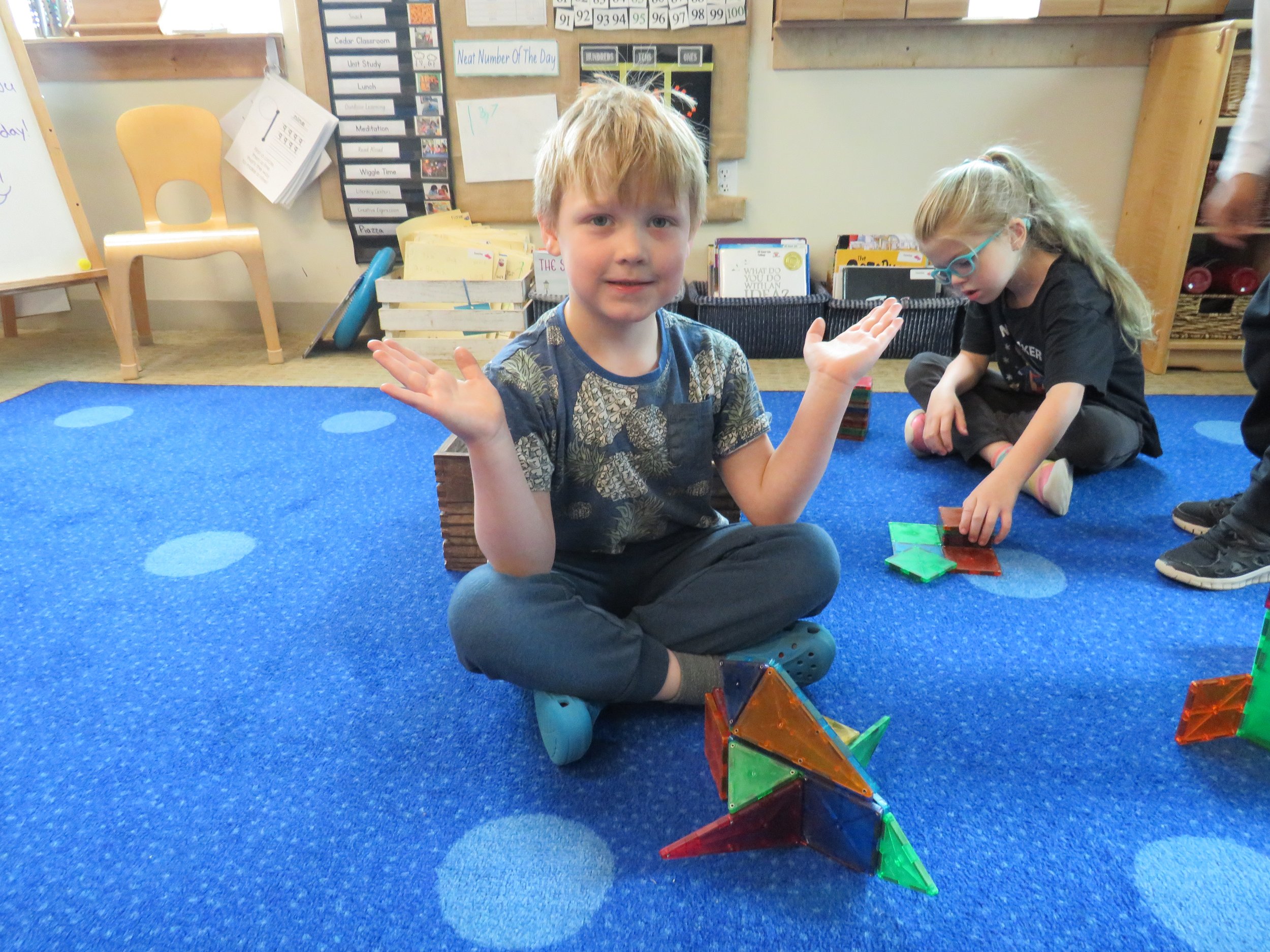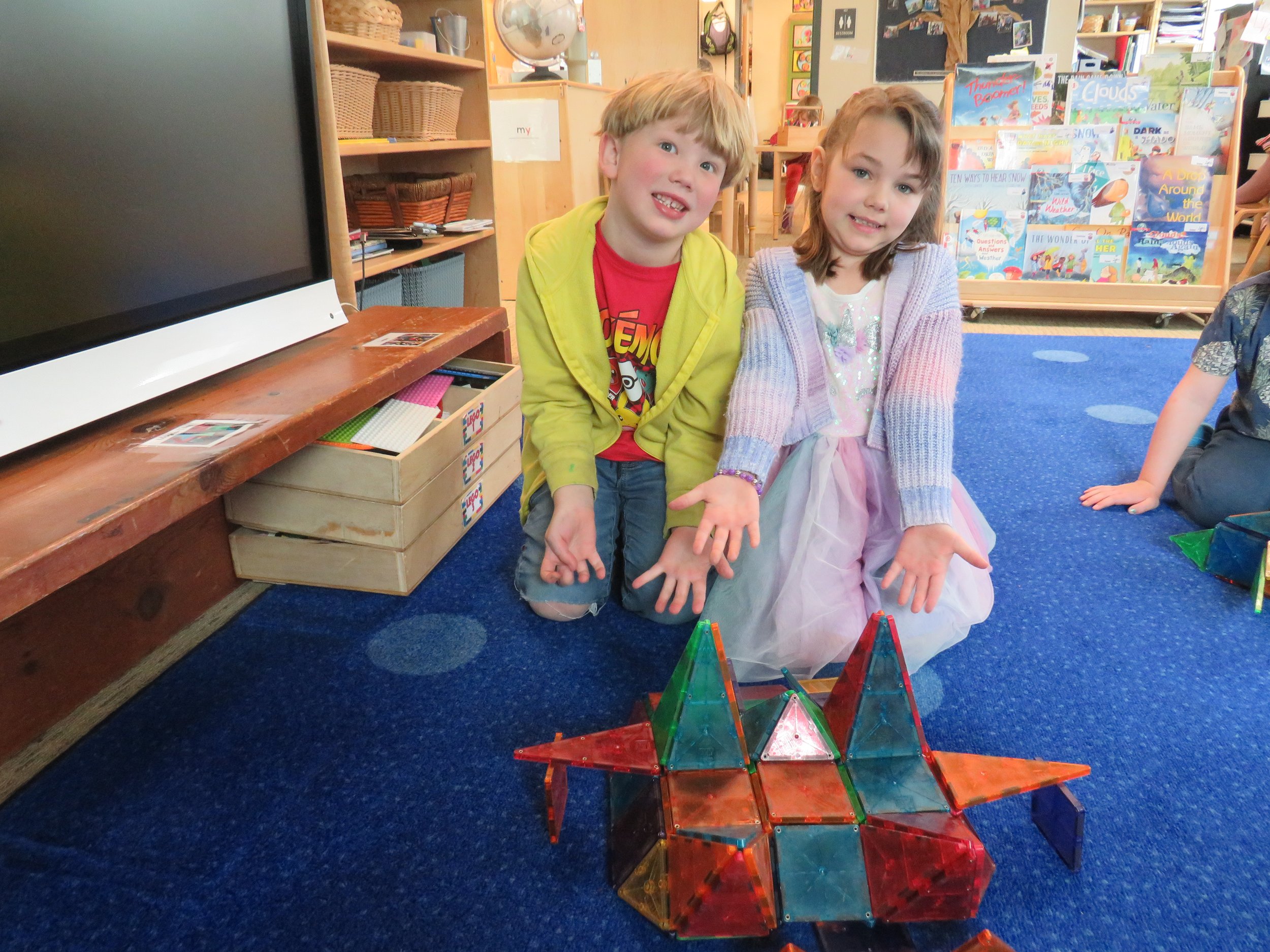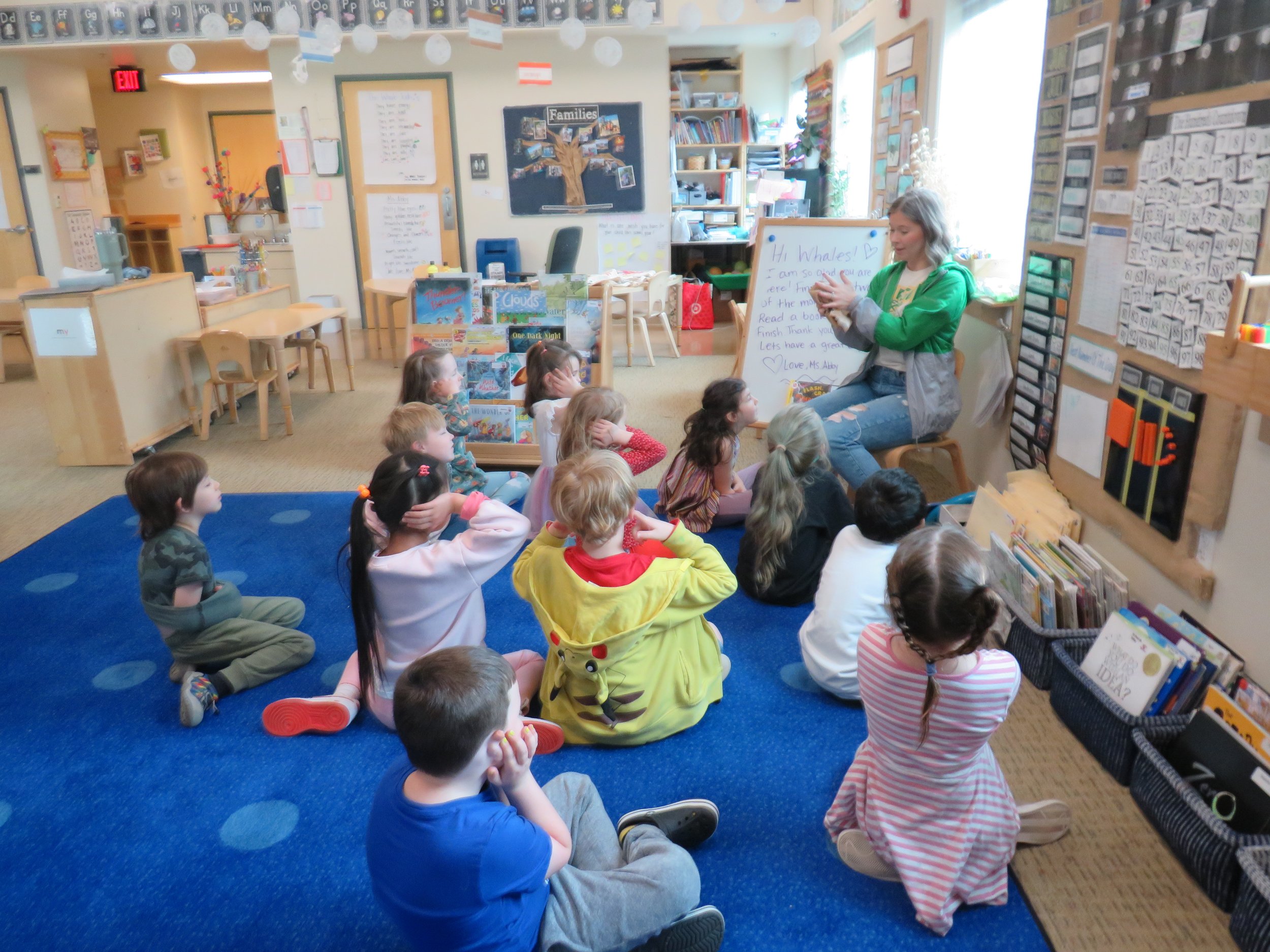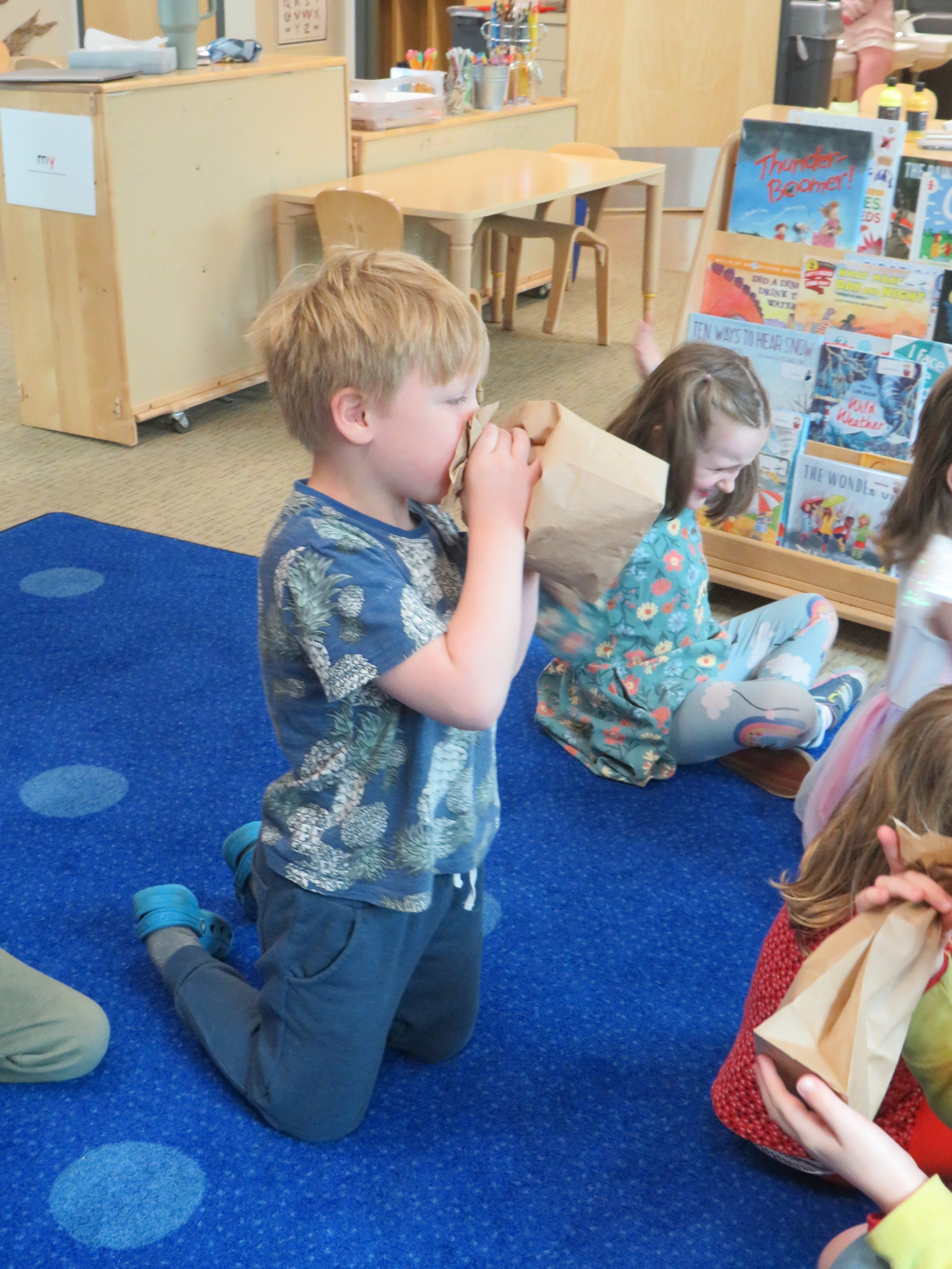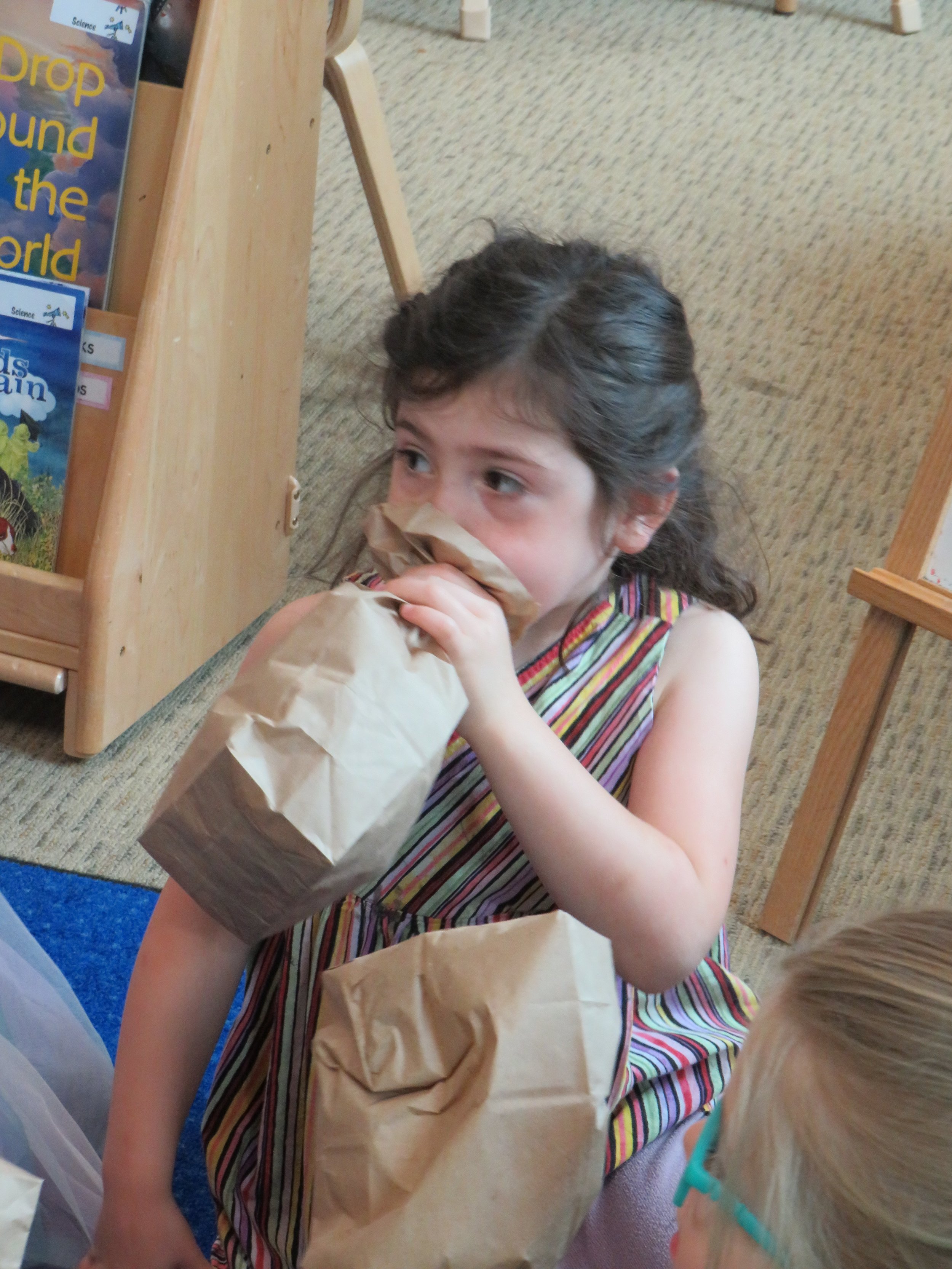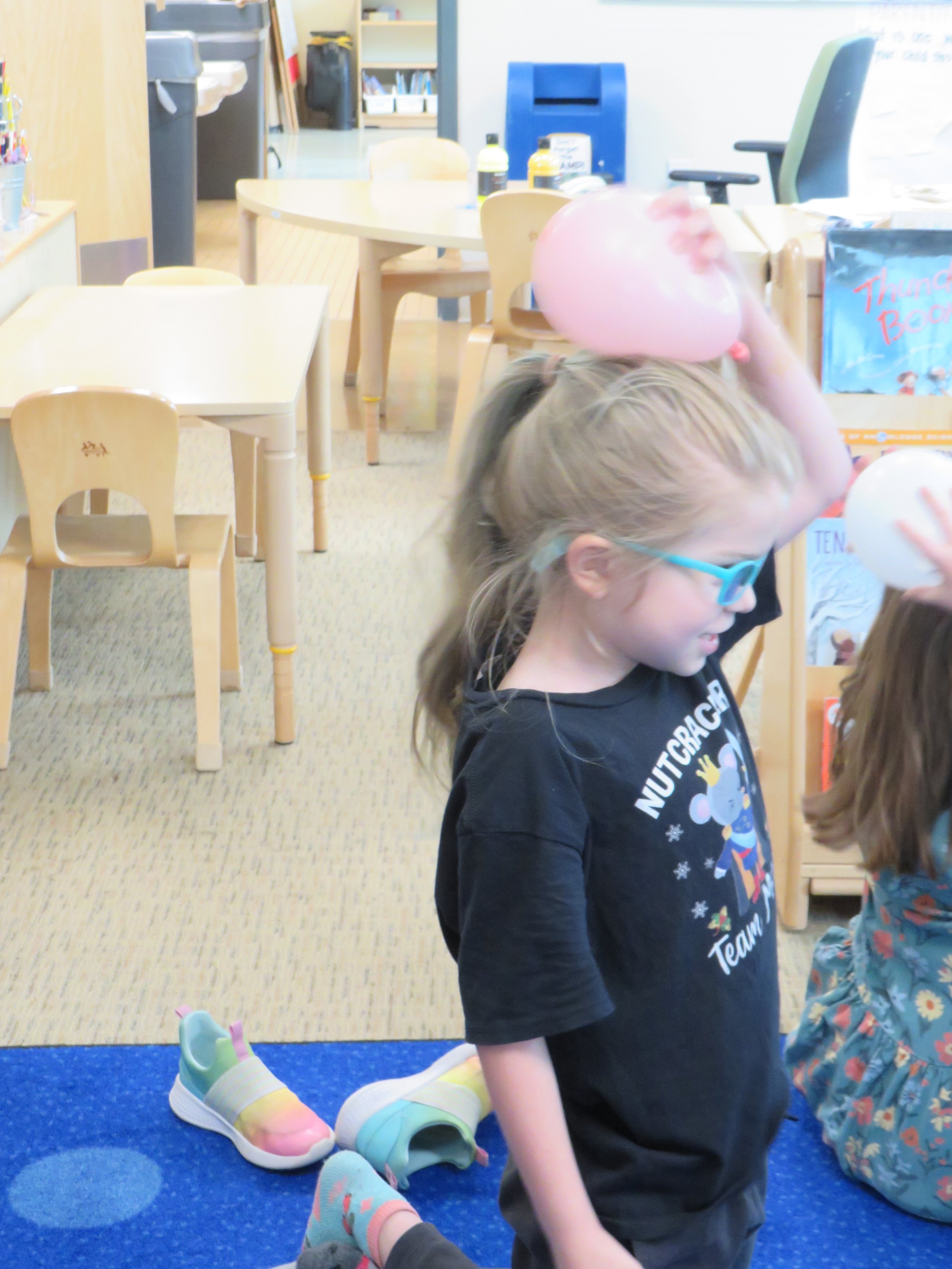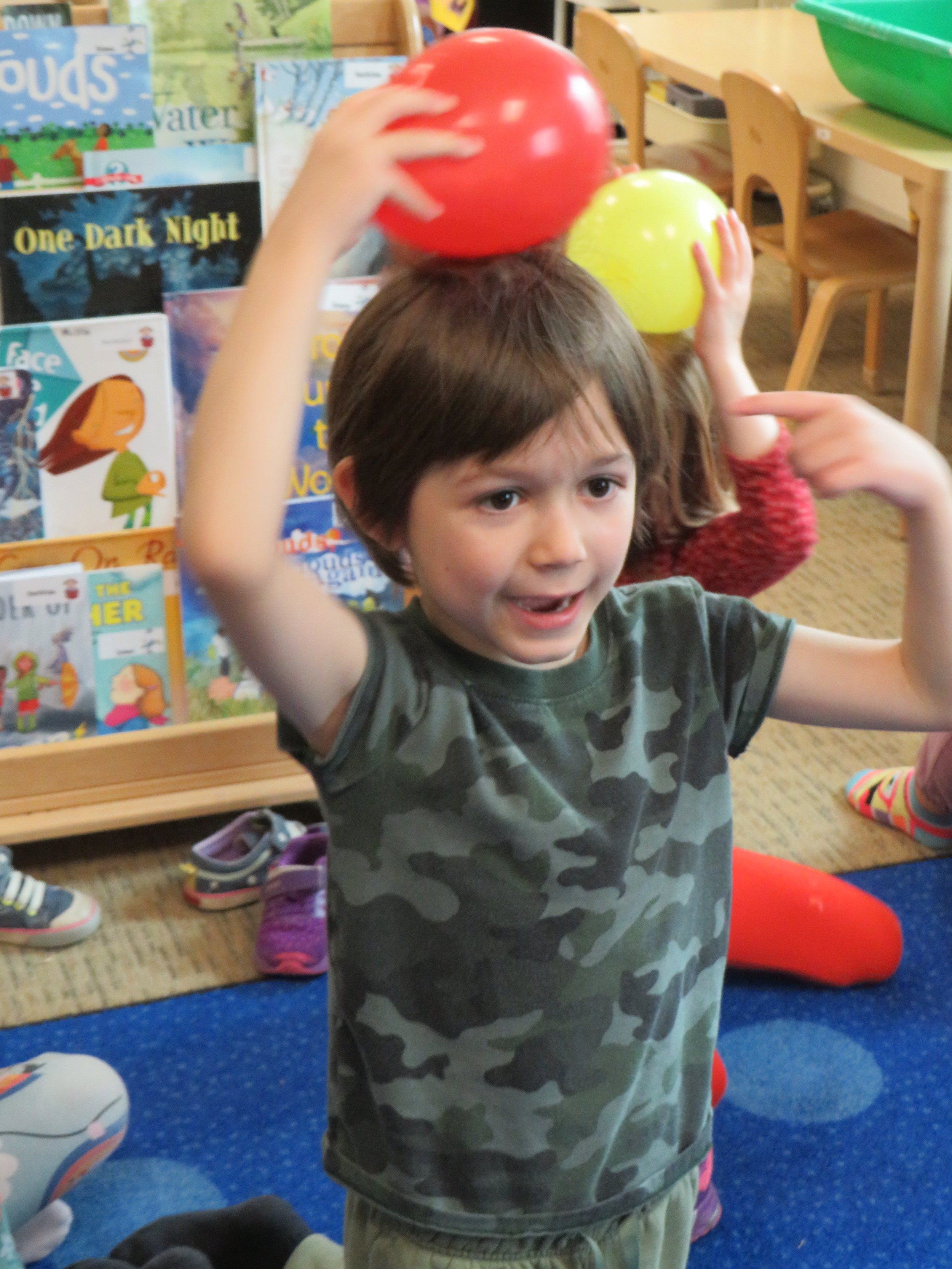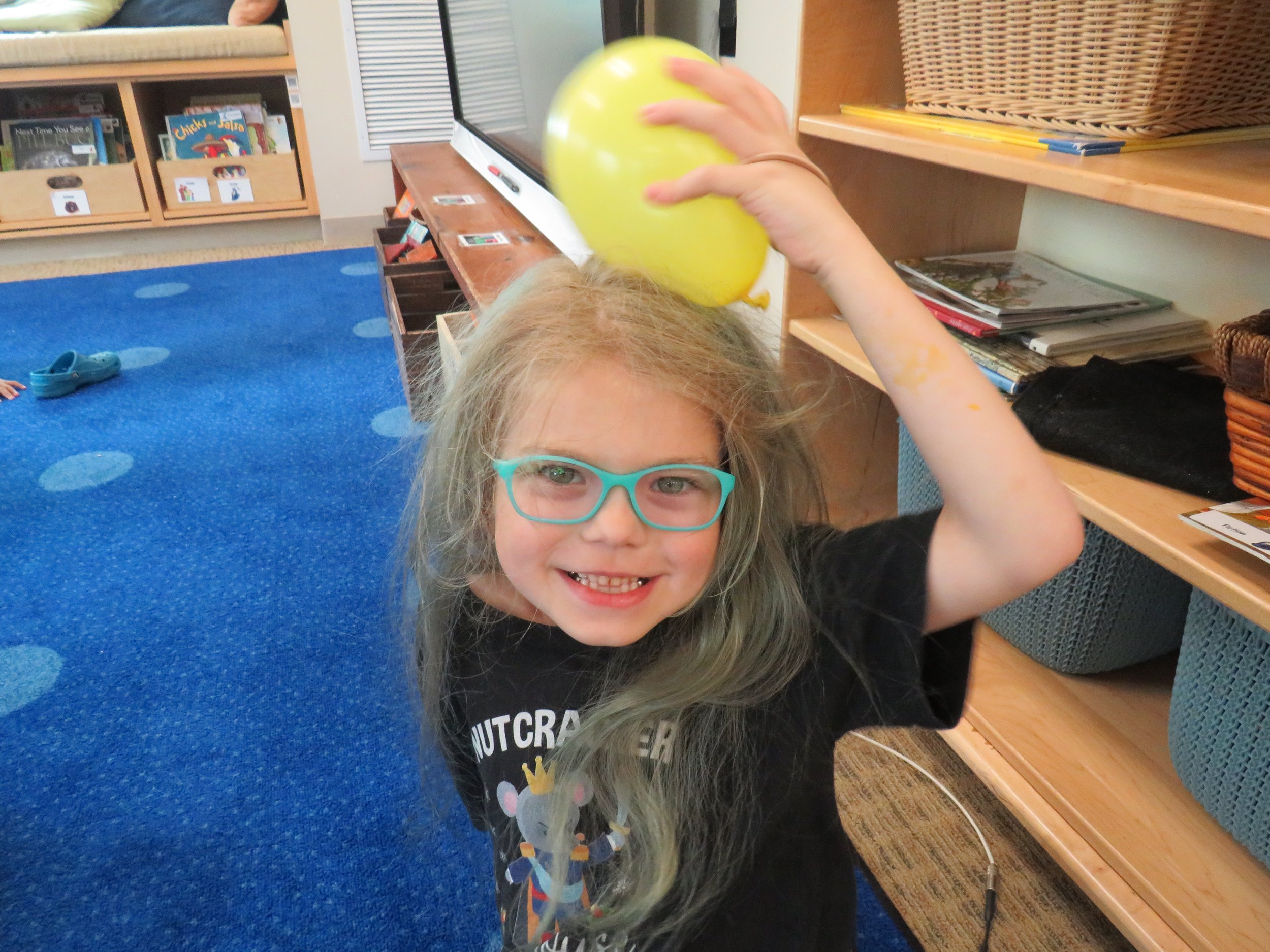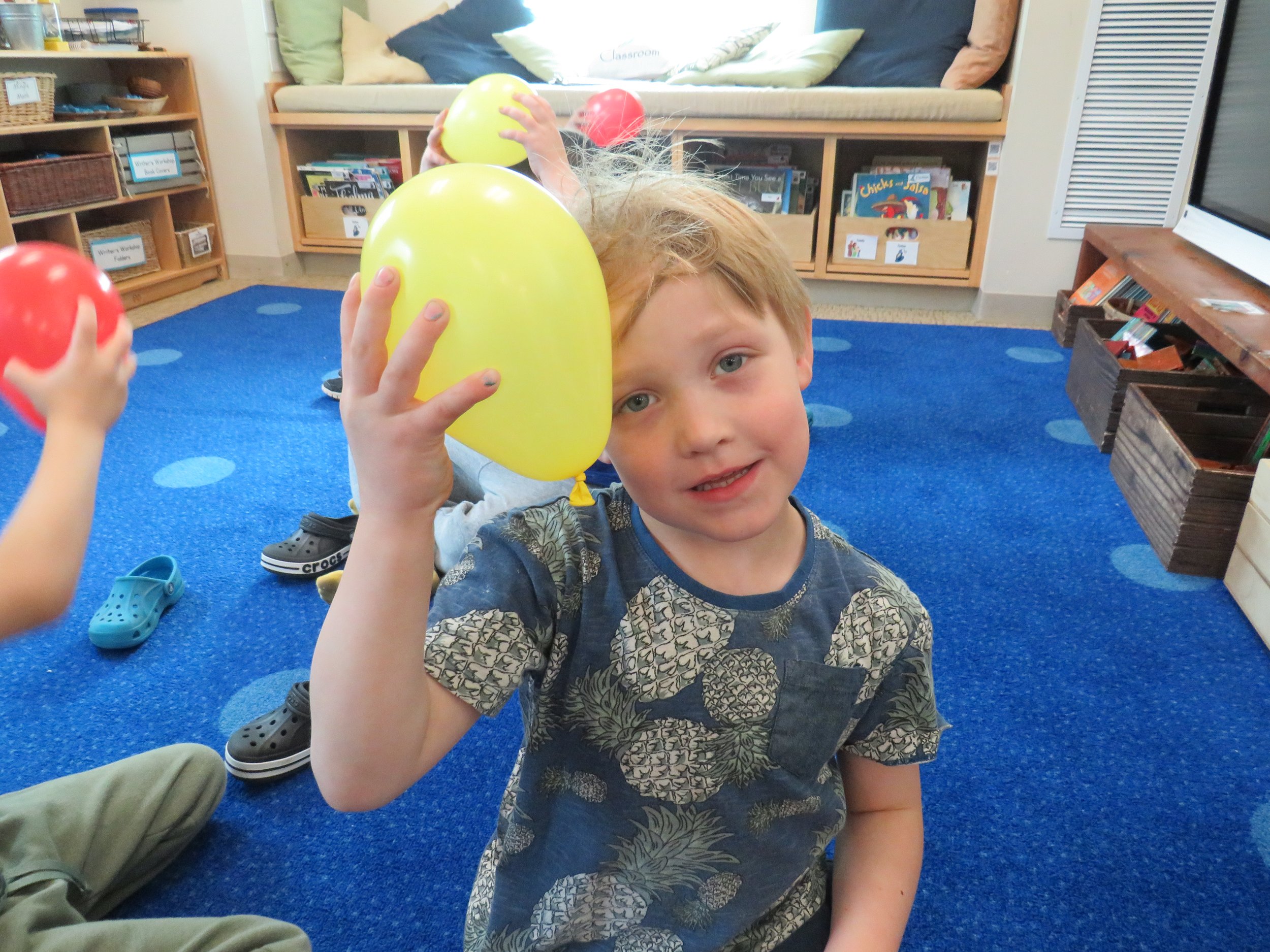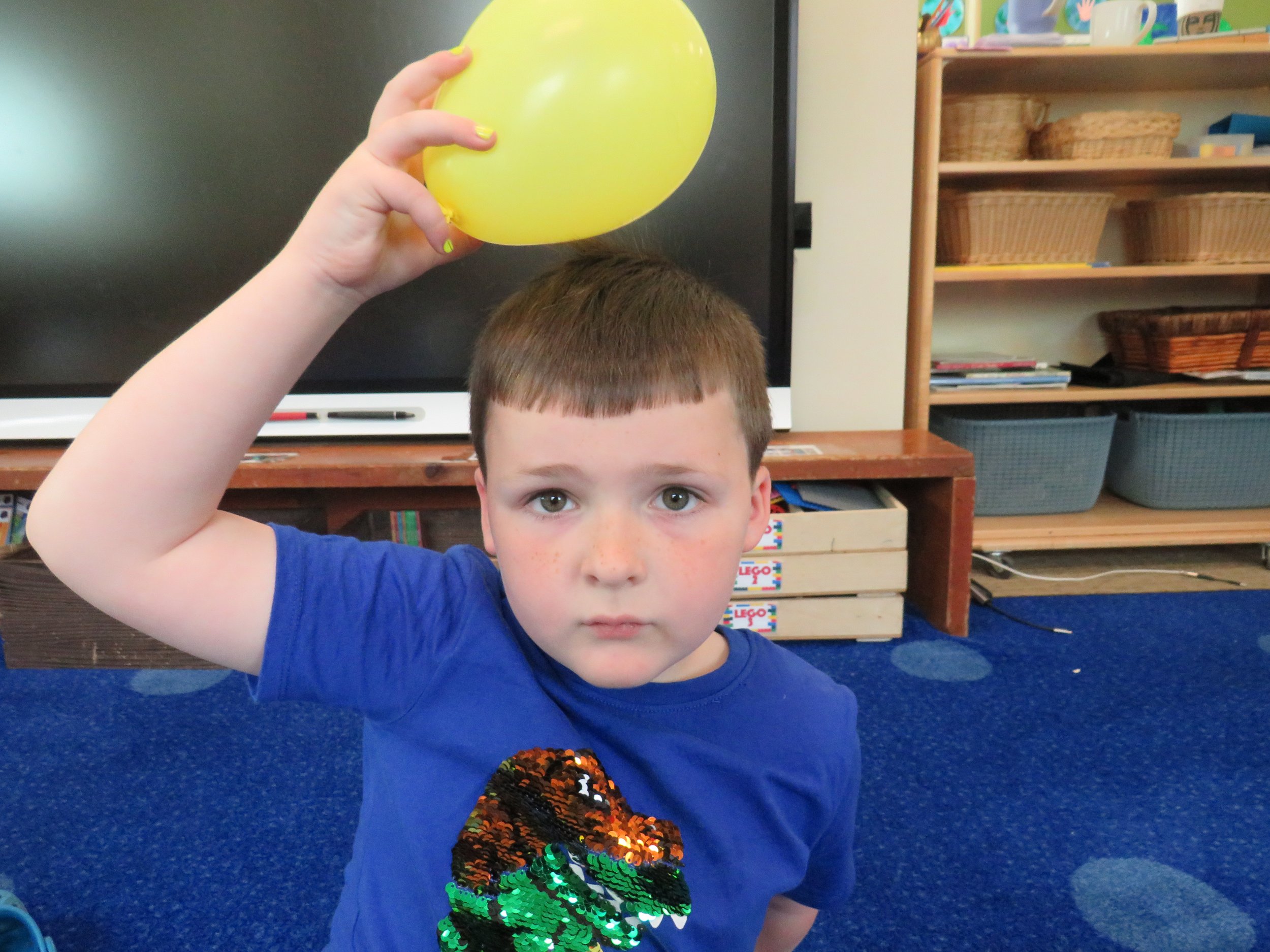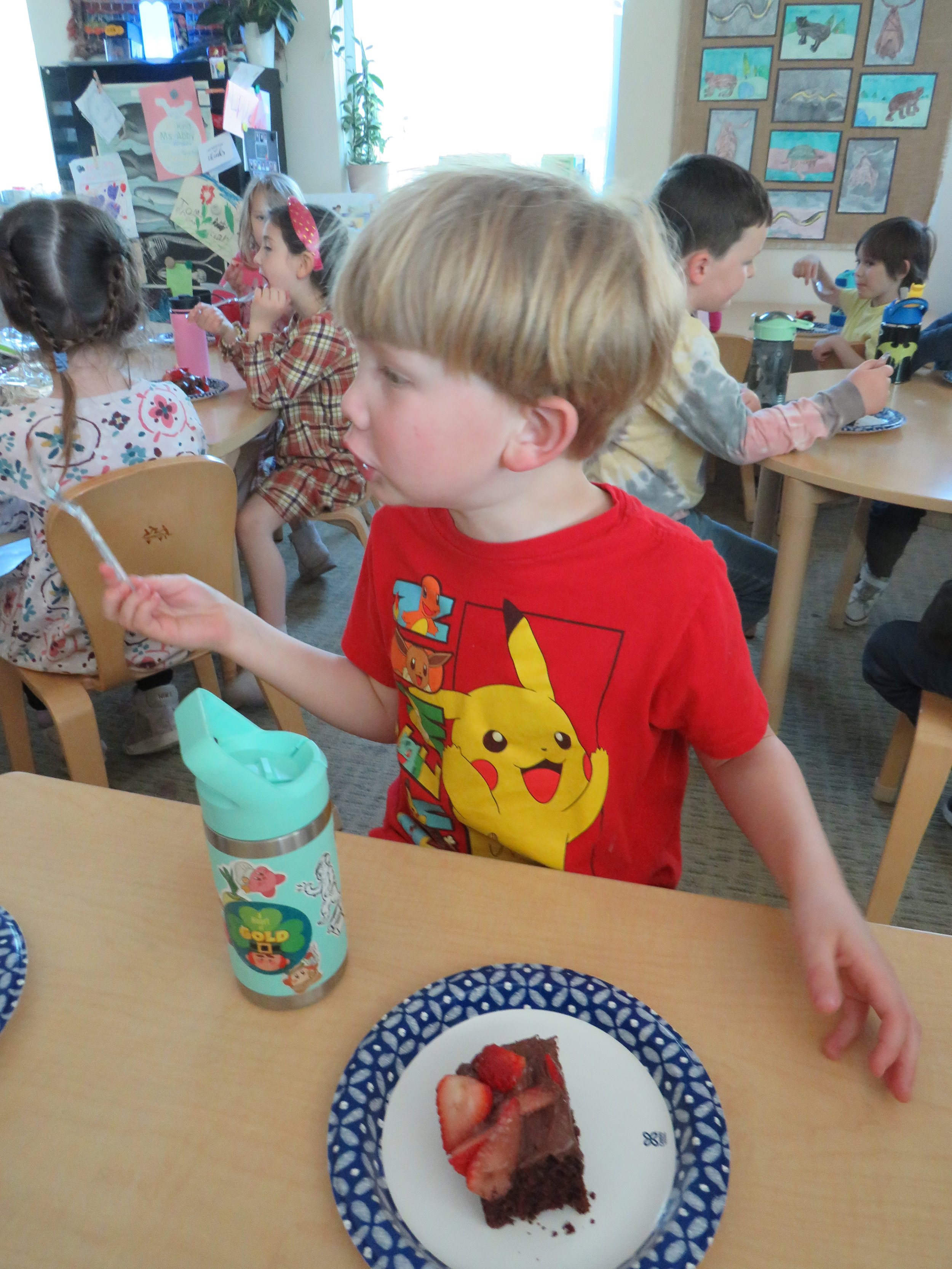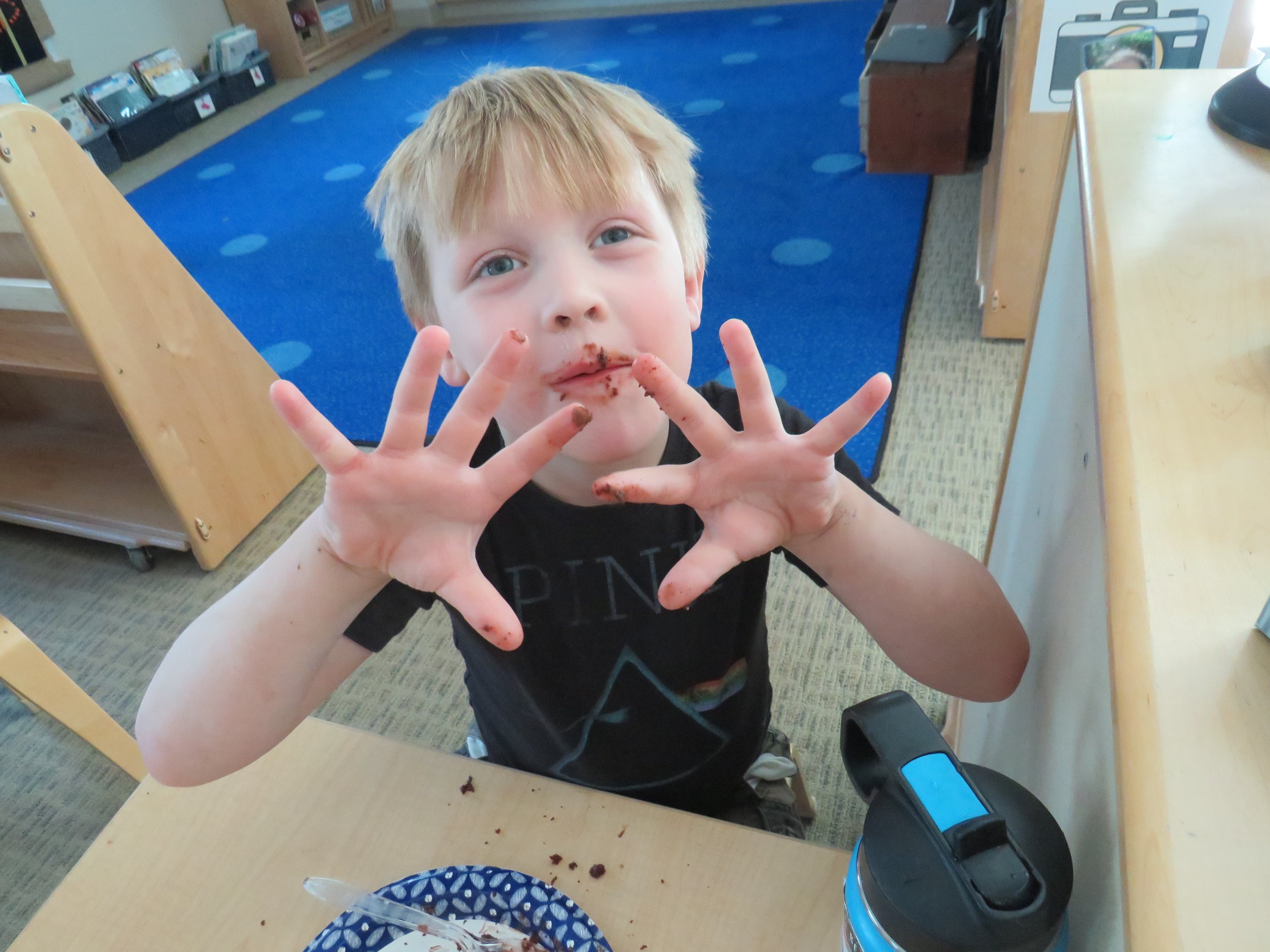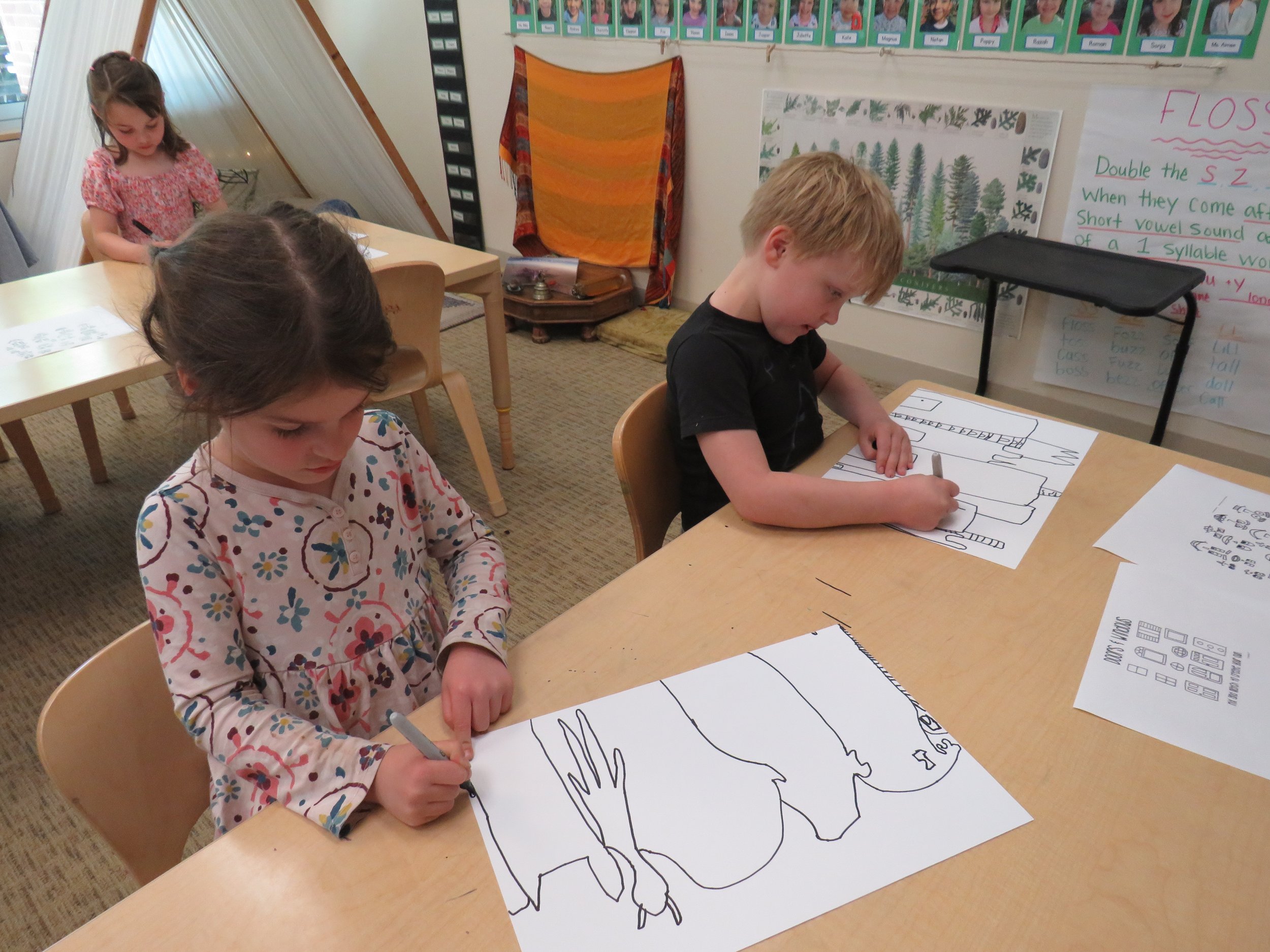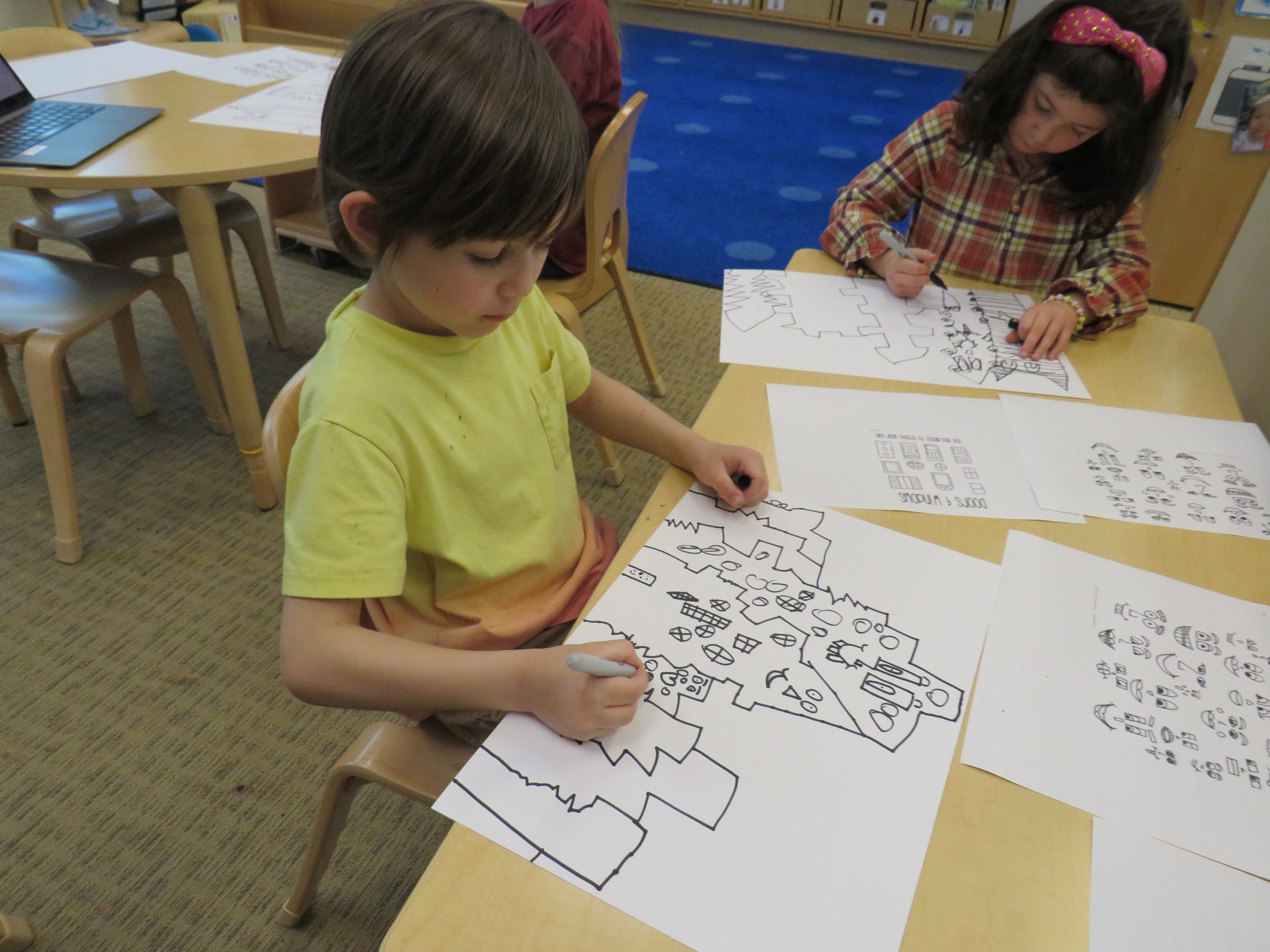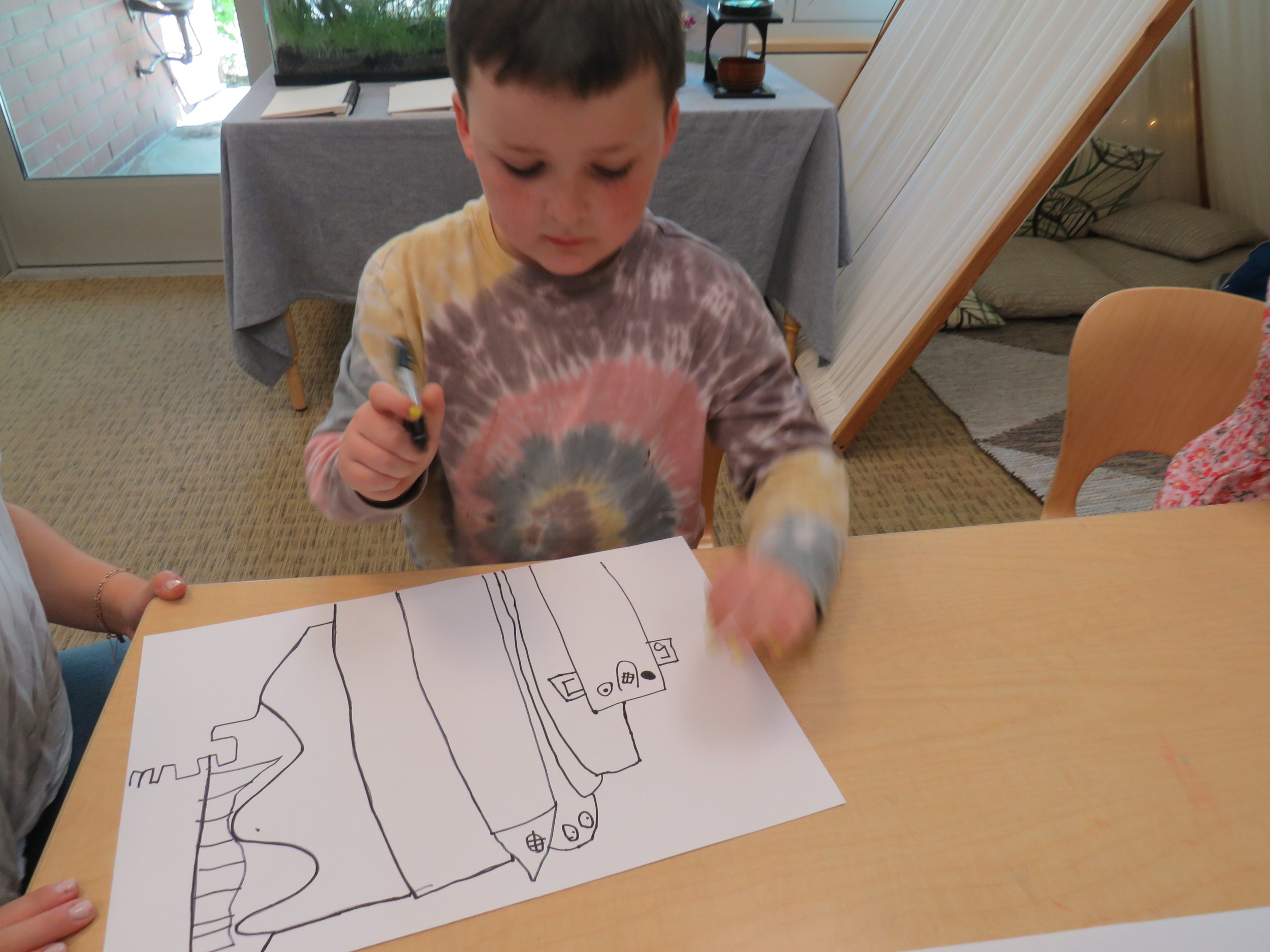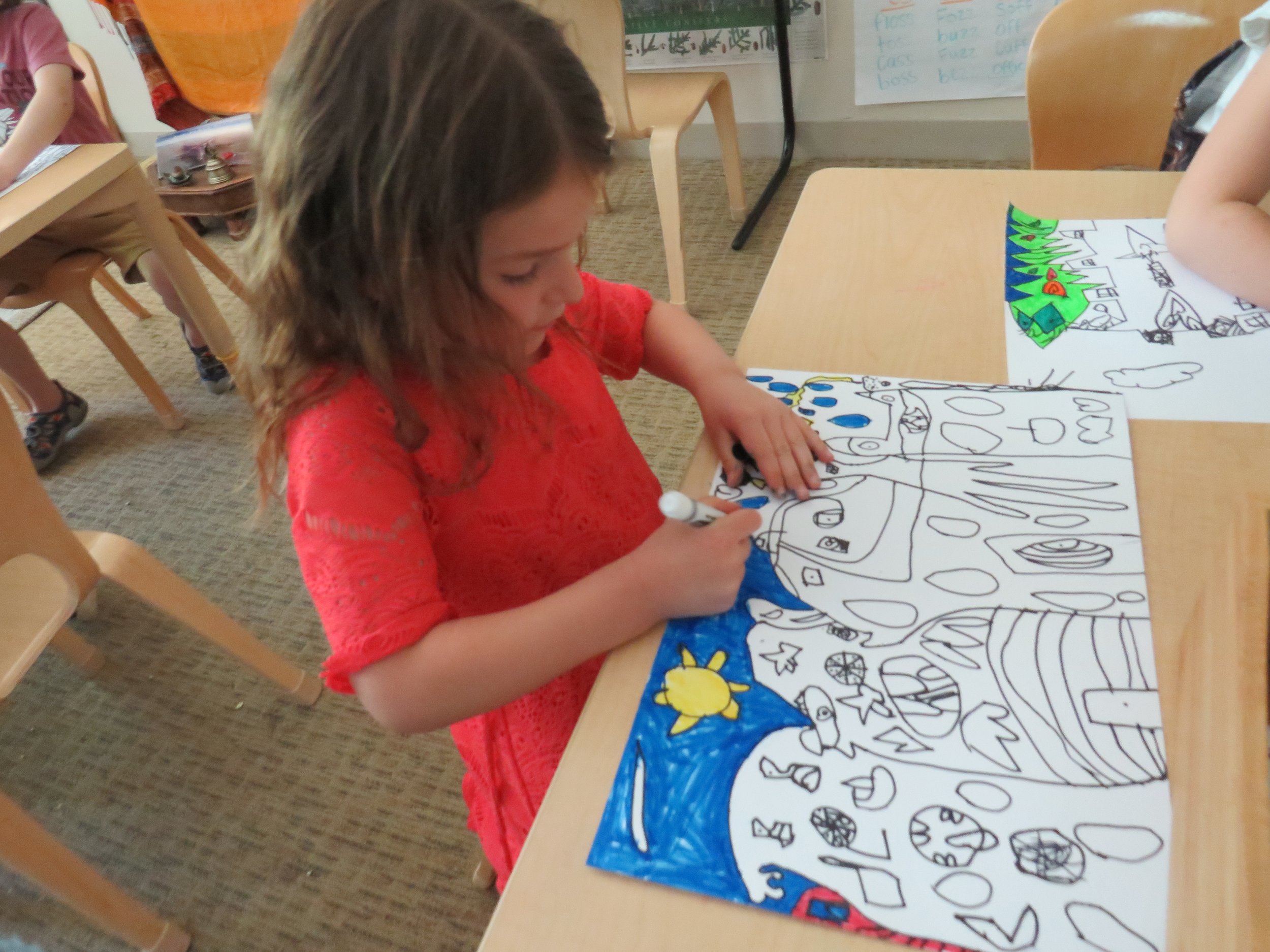Thunder Cake, Cityscape Art, and Sunny Weather
/ Abby ThompsonThe Whales were busy this week finishing up their unit of study on weather. They learned all about thunder and lightening. On Monday, the Whales learned that lightening happens when billions of water droplets in the clouds are rubbing together due to a lot of warm and cool air moving them around in the cloud. Each water droplet has a little bit of electricity in it. When billions of them are rubbing together that electricity grows and grows until it has to escape. That is when we see lightening. Thunder occurs due to the lightening. The lightening causes so much hot air to escape all at once that it has to release, creating thunder. We talked about how we see lightening right when it happens, but that thunder takes some time to get to our ears. Light travels faster than sound waves. We made our own version of thunder by breathing our hot air into a brown paper bag, and popped the bag with our hands. That hot air escaping is what made the thunder sound from our bags. We also made electricity with a balloon and our bodies. The Whales rubbed a balloon on their heads to create static electricity. This electricity was so strong that we could light up a light bulb just by holding it.
On Wednesday, the Whales read the book Thunder Cake. In this book, a grandma is with her grandchild when a thunder and lightening storm begins happening. They count how far away the storm is. While the storm is far away they gather different ingredients to make their Thunder Cake. They mix all of their ingredients together and put it in the oven. When the storm finally arrives, the sound of thunder makes it real Thunder Cake. The Whales made our own Thunder Cake and we even used the same ingredients including; pureed tomatoes, and chocolate. The Whales were a little nervous to try a cake with tomatoes in it. But they each took an adventure bite and decided the tomatoes helped the cake be super moist and delicious.
This week the Whales started a new art study on James Rizzi, a cityscape artist. James Rizzi cityscapes have fun and funky faces and lots of different colors and shapes. Look up some James Rizzi art with your Whale and ask them what they notice. Next week the Whales will continue working on their cityscape art. We will have them done and ready in time for celebration of learning! Yay!
The Whales are starting to learn some really tricky endings to some words. This week we talked about verbs. We said “If it is an action it is a verb!”. When we want to make a verb a past tense verb (something that already happened) then we need to add an -ed to the end. We learned that the -ed ending can say /t/, /d/, or /ed/. If the word has a voiced on letter at the end before the -ed then the -ed sound will be /d/ like in the word called. If the word has an unvoiced letter at the end before the -ed then the -ed sound will be /t/ like in the word jumped. The Whales are going to continue practicing this rule in both spelling and reading next week. This weekend be on the look out for words that end with -ed. Talk about the sound they make and talk about the past tense verb it is attached to!
Friday, was a warm and sunny day! The Whale enjoyed playing outside in the sunshine. They were able to cool off and enjoy a delicious popsicle. The Whales built with blue blocks to make amazing castles, they rode trikes around, and made some beautiful chalk art.




